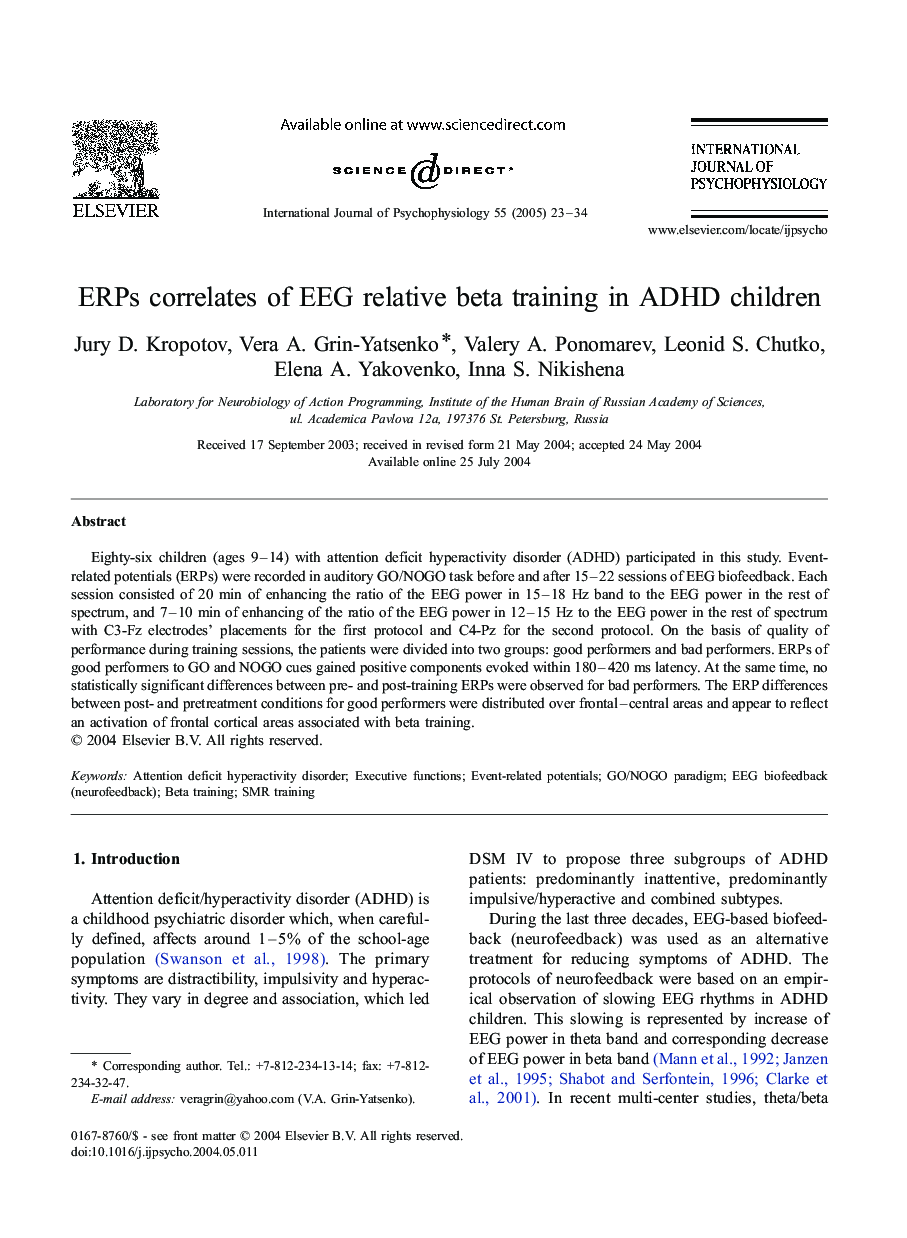| Article ID | Journal | Published Year | Pages | File Type |
|---|---|---|---|---|
| 9722708 | International Journal of Psychophysiology | 2005 | 12 Pages |
Abstract
Eighty-six children (ages 9-14) with attention deficit hyperactivity disorder (ADHD) participated in this study. Event-related potentials (ERPs) were recorded in auditory GO/NOGO task before and after 15-22 sessions of EEG biofeedback. Each session consisted of 20 min of enhancing the ratio of the EEG power in 15-18 Hz band to the EEG power in the rest of spectrum, and 7-10 min of enhancing of the ratio of the EEG power in 12-15 Hz to the EEG power in the rest of spectrum with C3-Fz electrodes' placements for the first protocol and C4-Pz for the second protocol. On the basis of quality of performance during training sessions, the patients were divided into two groups: good performers and bad performers. ERPs of good performers to GO and NOGO cues gained positive components evoked within 180-420 ms latency. At the same time, no statistically significant differences between pre- and post-training ERPs were observed for bad performers. The ERP differences between post- and pretreatment conditions for good performers were distributed over frontal-central areas and appear to reflect an activation of frontal cortical areas associated with beta training.
Keywords
Related Topics
Life Sciences
Neuroscience
Behavioral Neuroscience
Authors
Jury D. Kropotov, Vera A. Grin-Yatsenko, Valery A. Ponomarev, Leonid S. Chutko, Elena A. Yakovenko, Inna S. Nikishena,
